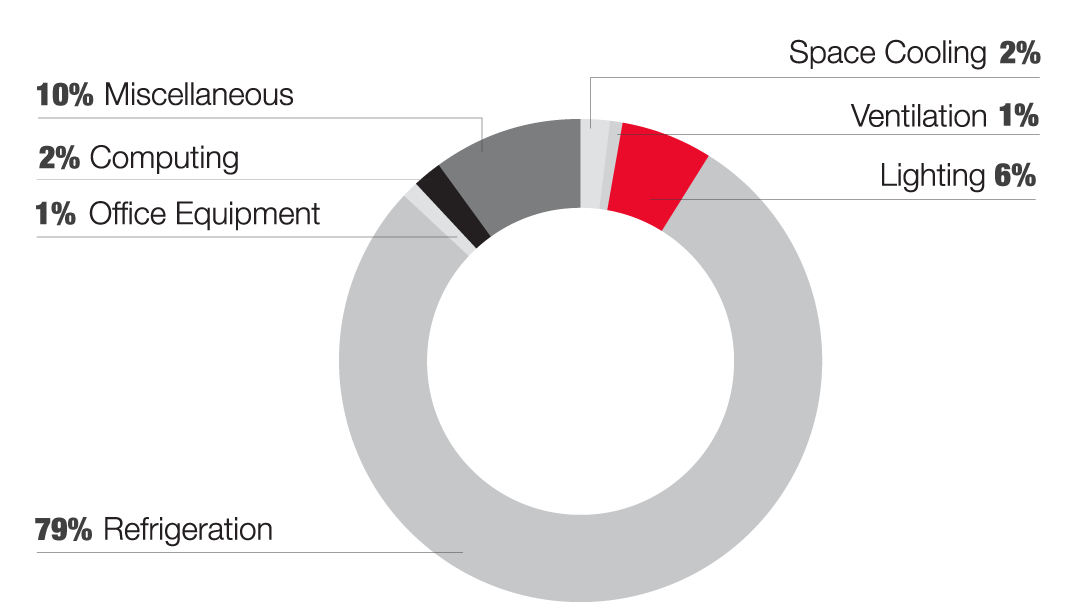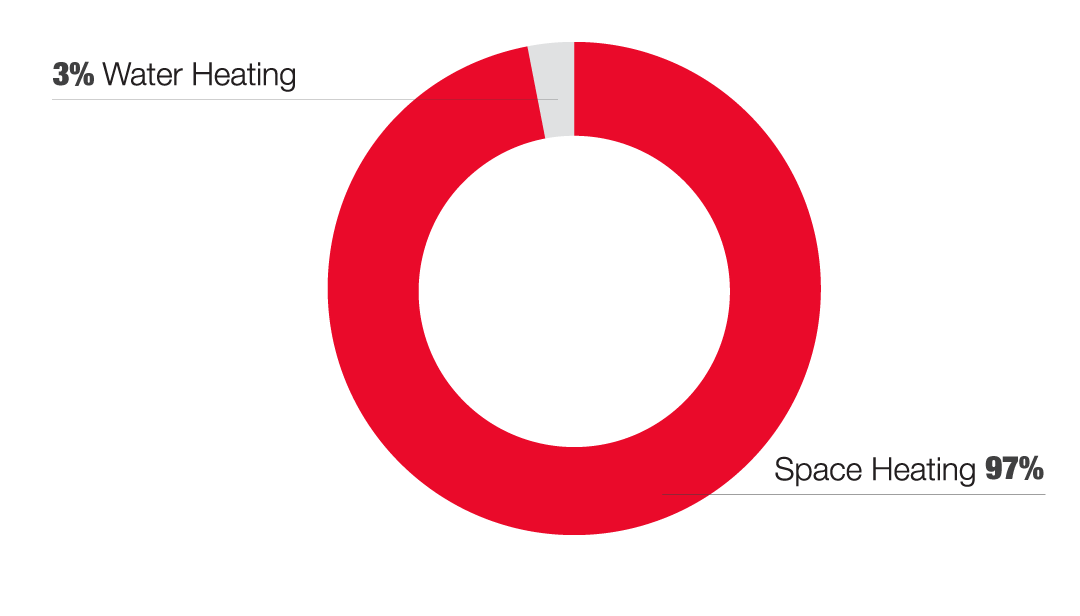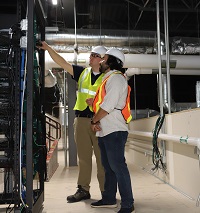Ship out high energy costs at your refrigerated warehouse
Did you know the average refrigerated warehouse in the Midwest spends over $13,000 per year on electricity and natural gas? Unsurprisingly, refrigeration is the activity that consumes the most energy for your operation. Bundling upgrades and saving on improvements is easier than ever with the Small Business Express program, which connects you with qualified contractors and rebates to create lasting energy efficiency savings for your office.
What uses the most energy in refrigerated warehouses
The following pie charts illustrate what refrigerated warehouse activities use the most energy and cost the most. Refrigeration accounts for the largest portion of energy use in warehouses. Electricity end uses include (from the top, counterclockwise): 10% miscellaneous, 2% computing, 1% office equipment, 79% refrigeration, 6% lighting, 1% ventilation and 2% space cooling. Natural gas end uses include (from the top, counterclockwise): 3% water heating and 97% space heating.
Electricity End Uses

Natural Gas End Uses

What's costing offices the most
| End Uses | Average Electric Cost/Month | Average Gas Cost/Month | Energy Savings Potential |
|---|---|---|---|
| Refrigeration | $750 | - |
High
|
| Space Heating, Cooling and Ventilation | $28 | $166 |
Moderate
|
| Miscellaneous | $95 | - |
Moderate
|
| Lighting | $57 | - |
-
|
Small Business Express is here to lend a hand
Small Business Express makes it easy for you to get professional guidance to identify energy-saving opportunities. Eligible rebates can help lower your out-of-pocket cost to replace failing equipment, and help you save energy and money long term.
Ways to Save

Refrigeration is a large cost for warehouses with the typical refrigerated warehouse spending $750 per month!
- Simple: Keep doors closed and optimize schedules. Decrease the head pressure set point and increase the suction pressure set point up to what conditions allow; this reduces compression ratio or lift and therefore energy use as well.
- Low cost: Perform recommended equipment tune-ups and clean evaporator coils. Reduce compressor use with a floating head pressure control.
- Capital investment: Optimize fan efficiencies by replacing evaporator fan motors with electronically commutated motors or installing variable frequency drives to control the operation of evaporator or condenser fans. Upgrade evaporators and select units with low horsepower/tonnage; upgrade compressors to high-efficiency models.

Heating accounts for nearly all natural gas usage for a typical refrigerated warehouse at $166 per month. There are several simple changes to help save energy.
- Simple: Keep large exterior doors closed as much as possible during cold periods. Optimize pick-up and drop-off schedules, and use automatic doors to prevent doors from being kept open for extended periods.
- Low cost: Perform annual maintenance on all heating equipment. Ensure underfloor heating systems are properly maintained.
- Capital investment: Replace older furnaces with new energy-efficient equipment. Ensure proper insulation levels in walls, floors and roofing to lower bills and increase comfort.

Despite refrigeration and space heating accounting for the vast majority of your energy costs, there are other simple ways to save.
- Simple: Charge electric vehicles and forklifts during off-peak demand hours to help prevent higher demand charges and reduce your utility costs.
- Capital investment: Consider upgrading to high-efficiency battery chargers for electric vehicles like forklifts when replacing or re-leasing this equipment.

Lighting costs can be significant depending on the size and layout of your warehouse. The tips below will help you save as much as 70% of the cost associated with lighting.
- Low cost: Install motion sensors in aisles and other areas where lights would otherwise be left on for extended periods of time with no occupancy. Timers and photo sensors can be used to keep security and outdoor lighting on a schedule to maximize efficiency.
- Capital investment: Upgrade to LEDs to see savings of 50% or more compared to metal halide and high-pressure sodium HID fixtures! LEDs also have a longer life span resulting in reduced replacement costs, emit less heat thereby reducing the cooling load on your refrigeration system and eliminate time lost due to lighting warmup periods since they are instant-start.

See how your warehouse compares
Energy Use Intensity (EUI) is a common measure used to benchmark a building’s energy use as a factor of its size. To calculate EUI for your warehouse, total your electric bills for one year, then divide by your building’s square footage; repeat for natural gas. If the score is lower than those listed below, you are using less energy than most.
|
Average EUI for Refrigerated Warehouses in the Midwest
|
|
|---|---|
|
Electricity
|
Natural Gas
|
|
28.9 kWh/square foot
|
0.13 therms/square foot
|
Call us today at 800-432-8583 to learn about tools that can help you with benchmarking your facility.
Other Resources